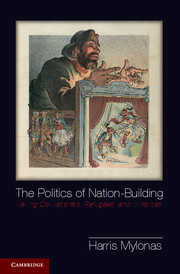Methodological Appendix
Published online by Cambridge University Press: 05 January 2013
Summary
THE POLITICS OF “COUNTING PEOPLE”
The most daunting problem of studying nation-building is that of deciding which groups should be included in the analysis. The necessary historical research has not progressed enough in this highly politicized field to allow for a clear picture of the situation on the ground in the Balkan states during the period of interest.
The politics surrounding statistics on “national minorities” or “ethnic groups” is an extremely problematic aspect in the study of nation-building. First, whoever is doing the counting often predetermines the results. Second, even if we assume that existing statistics on ethnic composition are accurate, we can never be sure that the categories used in a census were the most salient ones for the people on the ground. For example, depending on which dimension the state census committee chooses to highlight – religious affiliation, mother tongue, regional identity, racial categories, or ethnic origin – it can produce a very different “ethnic structure.”
An aggregate approach to issues related to nation-building is precarious and cannot serve as the final word. Using census data to explain nation-building policies is, to an extent, confusing the outcome for the cause. Census data on “ethnicity” are part and parcel of nation-building policies and so are maps and atlases. The obvious case is that of groups that are not represented in census categories and are thus muted.
- Type
- Chapter
- Information
- The Politics of Nation-BuildingMaking Co-Nationals, Refugees, and Minorities, pp. 201 - 218Publisher: Cambridge University PressPrint publication year: 2013



